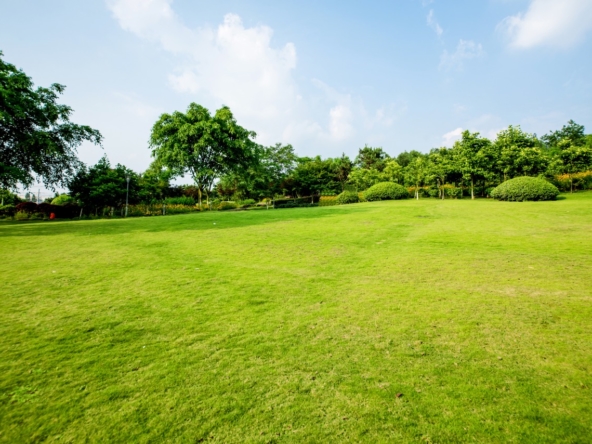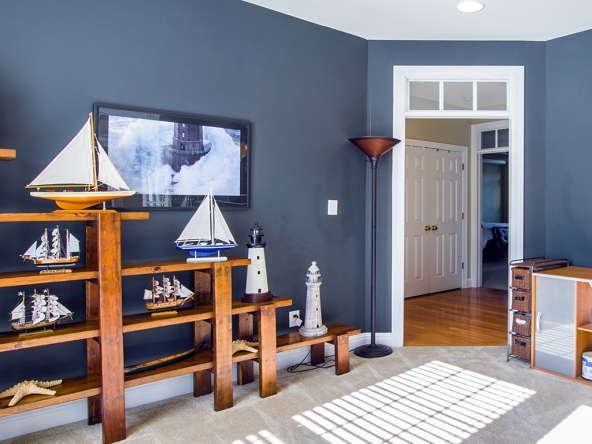As a landlord, you are responsible for providing a habitable environment for your tenants before the tenant’s movers start unloading their stuff.. That means that your property should not be a hazardous place. You should take care of any safety concerns before your tenant moves in to avoid lawsuits and future damage to the property. Some new rental property owners and landlords do not know how to make sure that their properties are safe for tenants.
Once you have found and screened a tenant to fill the vacancy at your rental, the next step is to actually have the tenant move into your property. There are certain steps every landlord should take to help make this transition to be smooth as possible. If you get into the habit of checking off these items every time a new tenant moves in, the process will be easier for both you and the tenant, and misunderstandings and complaints will be minimized.
1. Repair Any Damage or Health and Safety Issues
Before a tenant moves in, you will want to repair any existing damage at the property.
You will also want to make sure there are no health or safety issues. Safety issues include verifying that there are two forms of exit from the unit and that all carbon monoxide and smoke detectors are in working order. This maintenance is necessary for the health and safety of the tenant. It also helps to ensure that you pass any property inspections required before the tenant moves in. You should also make sure no one else has a spare key to the tenant’s apartment.
You should not allow unsupervised repairmen inside a tenant’s apartment as this could lead to claims of robbery. You should make sure you have followed all safety codes such as installing working smoke and carbon monoxide detectors. Tenants should feel safe outside of the building as well.
A tenant pays rent to reside in your property. It is your duty to them to respond to requests for repairs in a reasonable amount of time. The severity of the repair should warrant how quickly you should respond.
Tenant safety in your rental property should be your utmost concern as a landlord. If anything seems amiss in your rental property, no matter how small, you should always get a professional opinion before renting out your property to any tenants.
2. Clean the Property
This is especially necessary if you are doing an apartment turnover, which means there was a previous tenant living in the unit. You will want to make sure the unit is thoroughly cleaned, especially areas such as the tub, toilet, stove, and refrigerator.
Even if this is the first time you are renting out the unit and everything is brand new, you should still vacuum or sweep to remove any debris. You need to make sure trash is taken out, either by yourself or through an agreement with a tenant or superintendent.
You need to make sure common areas are well cared for; that they are free from garbage, mopped or vacuumed on a set schedule, and have working light bulbs. You must maintain outdoor areas in the same manner; make sure the grass is cut, outdoor lights are functioning, and the yard is free from debris. If a tenant has a problem with rodents, roaches, bedbugs or other, you will need to rid the problem yourself or hire a professional to do so.
3. Make Sure AC/Heat, Plumbing and Electric Are Working
Before a tenant moves in, you must make sure all utilities are working. You will need to do this whether you are responsible for paying for the utilities or whether the tenant is responsible for paying for them.
You will want to make sure the AC works in all rooms, that there are no clogs or leaks in the plumbing and that the outlets and overhead lights in every room are operational. These are necessities that a tenant needs to maintain their quality of life.
4. Documentation Needed in Sri Lanka
According to SL law there are certain must have’s in terms of documentation.
- Copy of NIC/Passport from tenants
- Reference from place of work
- Reference from previous landlords
- Confirmation of permanent address
- Credit History (bank statements, bills, credit cards.)
5. Go Over the Lease and Have the Tenant Sign the Lease
You should go over the lease agreement with the tenant section by section so that they completely understand what they are agreeing to. Once you have gone over the entire agreement with the tenant and answered any questions, you and the tenant should sign and date the lease agreement in front of a witness.
6. Collect First Month’s Rent and Security Deposit
You should always collect the first month’s rent and the entire security deposit before the tenant moves into the unit. If the tenant does not pay on time the first month, it increases the likelihood that they will be late with their rental payments the following months.
As a landlord, it is your legal responsibility to keep a tenant’s security deposit according to your state’s laws. Many states are different, so you will have to check with your state to learn what is required.
7. Have Property Inspected if Required
You may have to have the unit inspected before a tenant can move into the unit. This inspection is done so the city can issue you a Certificate of Habitability. Some towns only require this inspection the first time the unit is rented, some towns require it every five years and some require it every time a new tenant moves into the unit. Make sure you know your town’s rules.
In the agreement, have a clause so landlord can enter the property on a pre-agreed date and time with tenant to inspect it during the tenancy.
8. Change Locks
Before a new tenant moves in, you should always change the locks on the doors. This is done for the safety of the tenant and to protect you from liability.
You do not want an old tenant to have the keys to the new tenant’s apartment. Spend the Rs. 4000 on a new lock to avoid any issues. You should always change the locks once a prior tenant moves out and before a new one moves in. If you are going to give keys to realtors to show your vacancies, make sure to use a generic lock and then replace the lock prior to your tenant moving in.
9. Go Through the Move-In Checklist
On the tenant’s actual move-in day, you should go over the move-in checklist with the tenant. The checklist describes the condition of the property as a whole and of each room in detail. You should have the tenant sign and date this checklist. The move-in checklist is important as it allows you to compare the condition of the property when the tenant moves in, to the condition of the property when the tenant moves out.
10. Provide Tenant with Your Contact Information
You should provide the tenant with your contact information. This will be the method of communication which allows them to reach you if they have a question or complaint. It can be a phone number or an email address, but make sure they know to only contact you during normal business hours as required. Tenants can speak with the relevant Gramasevaka officer if required too.
11. Go Through Any Specific Tenant Requests or Conditions
There are situations where a tenant may have a specific request or special requirements that are not typical. Some examples could be:
- Having the apartment painted a certain color
- Installing a washer/dryer prior to move in
- A disability which requires a service animal
In the situations that are more desirable than necessity, it is up to you to decide if you would like to honor the request. You should make sure to add any special requests as a clause in your lease agreement.
12. Landlords Should Advise All Tenants to Purchase Renters Insurance
Many tenants do not know they are not covered under your insurance policy. You should advise all tenants to purchase renters insurance, so their possessions are protected in the event of a fire, flood, or other disaster. Renters insurance can also help protect their liability for an accident a guest may have inside of their apartment.-








